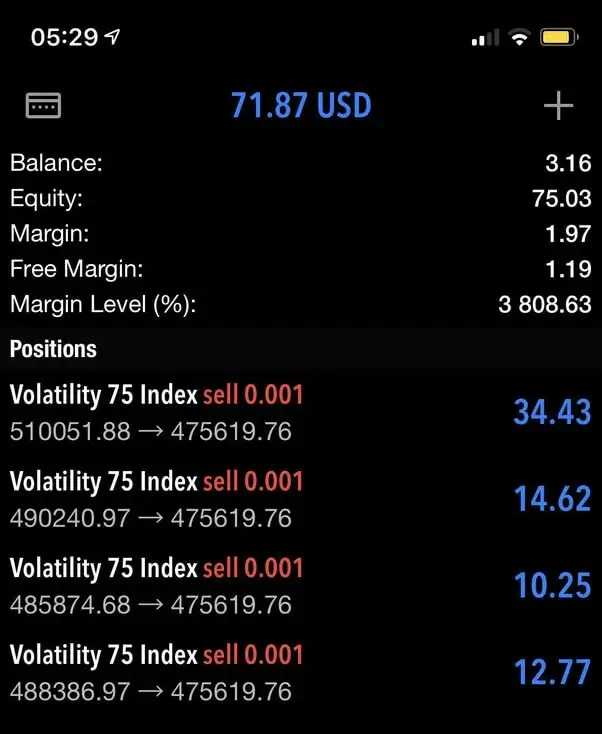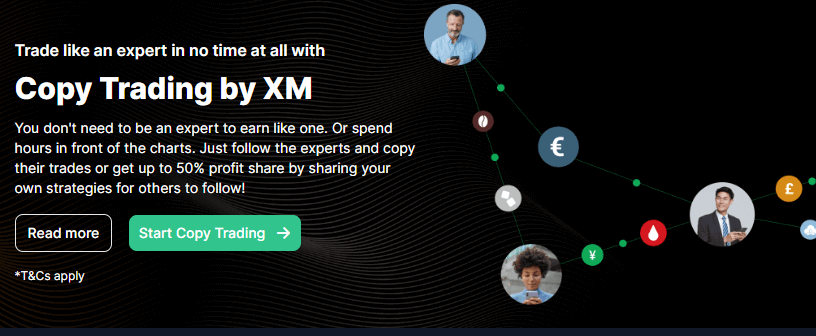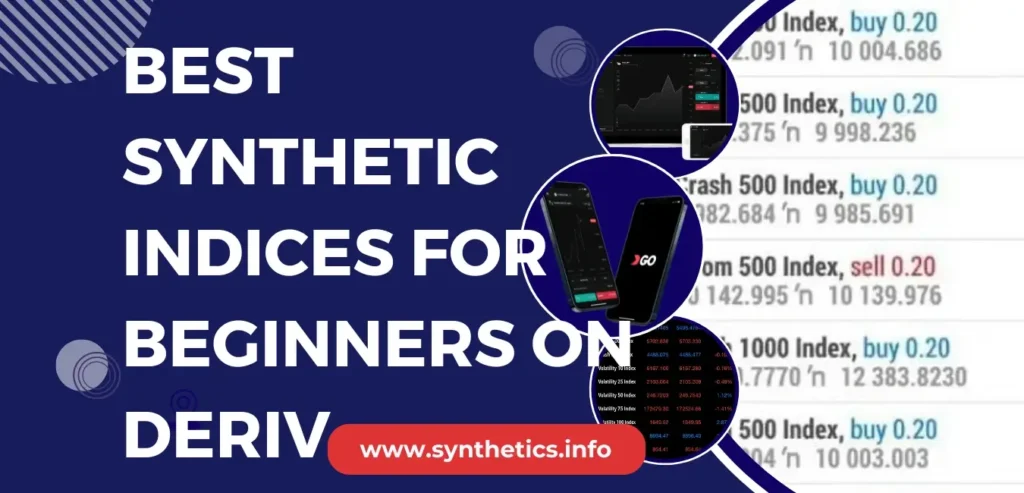When I first dove into synthetic indices back in 2016, there were only a handful—and everyone swore by V75. Naturally, I jumped in headfirst on that one. Looking back, though, that wasn’t always the kindest introduction—there were gentler indices that would’ve spared a newbie’s balance in those early days. The problem is that I had no one to tell me the best synthetic indices for beginners on Deriv.
Fast-forward to 2025 and you’ve got almost 30 synthetic indices on MT5. I can only imagine how someone green behind the ears might feel—overwhelmed, or even ready to give up before they begin.
That’s why I’ve distilled the list down to the first five you should focus on. Start here, build your confidence, and then scale up. No more paralysis by analysis—just clear, data-backed picks to get you trading with ease.
What Are Synthetic Indices?
Synthetic indices are 24/7, algorithm-driven markets on Deriv—untethered from economic news but designed to mimic real-world volatility. They give you consistent, news-free moves and predictable patterns. Learn more →
 Read Review
OPEN AN ACCOUNT
Read Review
OPEN AN ACCOUNT
Min Deposit: USD 1
Total Pairs: 100+
Regulators: MFSA, LFSA, VFSC, BVIFSC
Why These Five Are The Best Synthetic Indices For Beginners On Deriv
When you’re just getting your feet wet in synthetic indices, you need markets that fit three core criteria:
- Small, Consistent Moves
- Manageable risk: A typical half-hour swing of $0.05–$0.25 means you can use small lot sizes and never feel like you’re blowing a chunk of your account on one trade.
- Clear P/L feedback: Tiny swings make it obvious when a setup works (or doesn’t), so you learn faster without blind luck.
- Low stress: You won’t spend your whole trade staring at the screen, waiting for a $5 move—just a few cents, and you’re out.
2. Clear, Repeatable Patterns on Simple Timeframes
- No sub-second chaos: These indices show clean ATR pullbacks, EMA bounces, or range breakouts on 1–30-minute charts—perfect for learning classic setups.
- Faster learning curve: When your charts aren’t flooded with noise, you can spot entry and exit rules in real time and build confidence trade after trade.
- Easy journaling: You can screenshot setups on M5/M15 and track exactly which bars worked, so every lesson becomes a repeatable edge.
3. 24/7 Liquidity to Fit Your Life
- Trade on your schedule: Whether you’re an early-bird in Asia or a late-night European, these indices never sleep—no need to wait for “market open.”
- Consistent order book: You won’t hit random gaps or freezes—just smooth, algorithm-driven fills anytime you log in.
- Global community: You’re trading alongside a diverse crowd, so the markets stay active even on weekends and holidays.
4. They move fast. Even a small account can grow in a short space of time. Like I did in the screenshot below, from $3 to $75 in three hours.

By focusing on indices that check all three boxes, you’ll avoid the rookie pitfalls—over-leveraging noisy markets, chasing unproven setups, or getting stuck waiting for economic news. Instead, you’ll build a solid foundation on markets built for consistency and clarity.
Pick your own pace
From the turbo-charged to the slow-and-steady, there’s an index for every risk level.
Prefer big, quick moves? ⚡ Most Volatile Synthetic Indices on Deriv →
Want calm and consistency? 🧊 Least Volatile Synthetic Indices on Deriv →
“Beginners looking for V10 (1 s)—often called ‘Flix 1’—should check out our step‐by‐step Flix 1 tutorial: How to Trade Flix 1 (V10 1 s) on Deriv.”
Now let’s look at the best synthetic indices for beginners on Deriv and the best time to trade them.

1. Crash 1000 – The Ultimate Tortoise
- Median 30-min swing: $0.05
- Best Times to Trade:
- Europe (07:00–13:00 UTC): ~$0.06 swing, ideal for M5 box breakouts
- US Overlap (14:00–18:00 UTC): ~$0.055 swing, cleaner follow-through
- Quiet Slots: Asia & Late US hold around $0.05—great for micro-pullback tests.
- Starter setup: On M5, draw a 5-bar rectangle and trade the first breakout. Stop just inside; target 2× risk.
2. Volatility 50 (Normal) – Calm Confidence
- Median 30-min swing: $0.11
- Best Times to Trade:
- Europe: ~$0.12 swing—perfect for M15 EMA bounces
- US Overlap: ~$0.115 swing—still low noise but more follow-through
- Quiet Slots: Asia (
$0.10) and Late US ($0.09) for tight-range drills. - Starter setup: 8/21 EMAs on 15-min; take the bounce off the EMAs. SL ~50 pts; TP ~100 pts.

3. Boom 1000 – Gentle Rallies
- Median 30-min swing: $0.21
- Best Times to Trade:
- Europe: ~$0.23 swing—ideal for M30 range breakouts
- US Overlap: ~$0.21 swing for steady multi-hour holds
- Quiet Slot: Asia (~$0.18) when you want extra calm.
- Starter setup: On M30, mark the high/low of the last 20 bars. Trade the first close beyond; SL inside; TP = 2× risk.
👉 For a deeper dive into all Crash & Boom indices (including Boom 1000), check out the main guide:
Crash & Boom Indices on Deriv
4. Volatility 25 (1s) – Micro-Scalp Practice
- Median 30-min swing: $0.07
- Best Times to Trade:
- US Overlap: ~$0.03 swings—your quick M1 fades fire off cleanly
- Europe: ~$0.028 swings—slightly calmer for three-bar breakouts
- Quiet Slot: Late US (~$0.025) if you need extra precision.
- Starter setup: On M1, wait for a 3-bar breakout, then fade the second bar. SL = 1× ATR; TP = 1.5× ATR.
👉 For a comprehensive look at all volatility indices, check out the full guide:
Volatility Indices on Deriv
5. Jump 10 – Mini Trend Machine
- Median 30-min swing: $0.15
- Best Times to Trade:
- US Overlap: ~$0.16 swings—crisp Jump setups on M5 EMA crosses
- Europe: ~$0.15 swings—consistent enough for small swing holds
- Quiet Slot: Asia (~$0.12) when you want low drama.
- Starter setup: On M5, watch the 5/13 EMA cross. Enter on the next bar; SL = 50 pts; TP = 100 pts.
👉 For the full rundown on all Jump indices, dive into the guide here:
➡️ Jump Indices on Deriv

Quick-Scan Cheat Sheet
- Crash 1000: $0.05 swing → 5-bar box breakout
- V50 (Normal): $0.11 swing → 15-min EMA bounce
- Boom 1000: $0.21 swing → 30-min range breakout
- V25 (1s): tiny swings → M1 3-bar fade
- Jump 10: micro jumps → 5/13 EMA cross
No filler, just what works for me when I’m showing a newbie how to get started.
🚀 How To Start Trading Synthetic Indices As A Beginner
1. 🖊️ Sign up on Deriv
- Go to the Deriv registration page and hit Sign Up.
- Use your email (or Google/Facebook) and pick a password you won’t forget.
2. 📧 Verify your email
- Open the confirmation link in your inbox, then log in to your dashboard.
3. 🔑 Add a Synthetic Indices MT5 account
- In Trader’s Hub, click Add New Account.
- Select Synthetic & Financial under CFDs → MT5 – Synthetic Indices.
- Copy your new MT5 login details (you’ll need them in a moment).
4.💰 Fund your MT5 account
- From Main Wallet, click Transfer and send funds to your Synthetic Indices MT5 account.
- Want to practice? Your demo MT5 comes with $10,000 virtual funds—no real money required.
5. 📲 Install MT5 & log in
- Download the MT5 app (desktop or mobile).
- Enter your MT5 login, password, and server (found in Trader’s Hub).
- Start demo trading until you feel rock-solid confident—then switch to live when you’re ready.
👉 Ready for a smooth walkthrough? This post will guide you step-by-step to add synthetic indices on MT5 and place your very first demo trade without a hitch: How To Trade Synthetic Indices on MT5
🛠️ Beginner Tips for Trading Synthetic Indices
1. Start on Demo—Seriously, Don’t Rush It
Synthetic indices aren’t just “forex in disguise.” I’ve watched folks vaporize accounts in a handful of hours—usually because they guessed their lot size or forgot how these markets tick. Fire up a demo, play around with each index, and really feel its pulse before you risk a cent.
Pro Tip: I’ve got a Lot Size Guide for every index—hit that first so you don’t end up guessing. 👉 Synthetic Indices Lot Size Guide
Commit to at least a month of demo trading. You’ll collect the scars without the wounds, and by the time you go live, you’ll know exactly where you screw up (and how to stop).
Need a demo account?
Here’s exactly how to get one: 👉 How to Open a Deriv Demo Account on MT5

2. Pick One Index and Own It
Don’t spread yourself thin trying to learn five at once. Choose one—maybe V25 or Boom 1000 if you like gentle moves, or V10 if you crave tiny scalps—and live in that market. The more time you spend staring at its charts, the faster you’ll spot recurring setups and avoid the noise.
3. Keep It Simple with a Trading Journal
Even in demo, jot down every trade: what caught your eye, why you pressed “buy,” and what actually happened.
After 50–100 entries, you’ll see both market quirks and your own blind spots. That’s where the real edge lives—when you learn from your mistakes before they cost you real money.
Knowing when to trade is just as important as what to trade — here’s a full
➡️ Best Time to Trade Volatility Indices guide to help you time your entries.
💰 How Much Do You Need To Start Trading The Best Synthetic Indices On Deriv As A Beginner?
Beginners often worry they need hundreds or thousands to start—but with smart sizing, you can begin small. Below, I break down five starter indices, their typical half-hour swings, and a demo balance that keeps your 1% stop roughly equal to one swing.

Crash 1000
- Median half-hour swing: $0.05
- Demo balance: $10
- Why it works: A $0.10 stop (1% of $10) covers about two swings—so you get room to breathe and learn without blowing your mini-account.
Volatility 10 (Normal)
- Median half-hour swing: $0.58
- Demo balance: $60
- Why it works: With a $0.60 stop (1% of $60), one swing equals your stop. Perfect for seeing clean structure moves without unexpected gaps.

Boom 1000
- Median half-hour swing: $0.21
- Demo balance: $25
- Why it works: A $0.25 stop (1% of $25) lines up with a single swing. Boom 1000’s gentle rallies mean you can practice breakouts safely.
Volatility 25 (1s)
- Median half-hour swing: $14.86
- Demo balance: $300 (using lower lots)
- Why it works: At full 0.001 lot you’d need $1,500 for a 1% stop—but by dropping to 0.0002 lots on demo, you can simulate real-size trades on a $300 balance.
Boom 300
- Median half-hour swing: $3.75
- Demo balance: $375
- Why it works: A $3.75 swing equals 1% of $375. Boom 300’s sharper spikes teach you timing, but you’ll stay comfortably within beginner risk.
Pro tip: Whatever live balance you plan to use, demo with that exact amount. Practicing on a $100 demo but going live with $20 throws off your risk math—and nothing feels like surprise losses when you switch.

🔗 Related Guides
✅ Lot Sizes for Synthetic Indices
Breakdown of minimum and recommended lot sizes for every synthetic index, so you size your trades like a pro.
✅ Deriv Copy Trading Review
Step-by-step walkthrough on setting up and profiting from copy-trading strategies on Deriv.
✅ How to Deposit and Withdraw from Your Deriv Account
Comprehensive guide covering all funding methods—cards, crypto, DP2P—and smooth withdrawals.
✅ Profitable Tips for Trading Synthetic Indices
Essential strategies and mindset hacks to boost your win rate when trading synthetic indices.
✅ Trade on Deriv X
A complete walkthrough of trading synthetic indices on the Deriv X platform, from login to order placement.
✅ Deriv Account Types Review
In-depth comparison of all Deriv account types—features, spreads, and fees—to choose the best fit.
👉 If you want a focused list of the best Volatility Indices for beginners — based on real movement data — check out my Best Volatility Indices for Beginners on Deriv.
📣 Your Turn: Let’s Hear Your Story
- Which synthetic index did you try first, and how did it go?
- What would you recommend a complete newbie tackle first—and why? In other words, which ones do you consider as the best synthetic indices for beginners on Deriv?
- If you were just starting today, which index would you dive into and what strategy would you use?
Drop your answers in the comments below to help the next wave of beginners find their footing!

FAQs On The Best Synthetic Indices For Beginners On Deriv
Crash 1000 tops the list—its median half-hour swing is just $0.05, so you can size up without fear. Next up are Volatility 50 (Normal) at $0.11, Boom 1000 at $0.21, Volatility 25 (1s) at $0.07, and Jump 10 at $0.15. These five offer the smallest, most predictable moves to help you learn clean setups.
Stick to M5–M30 charts. M5 gives you quick feedback on ATR pullbacks and EMA bounces; M15–M30 shows cleaner range breakouts and slower trends without overwhelming you with noise.
Yes—but keep stops tiny and only risk a fraction of your demo balance. For example, on V25 (1s) you can scalp 3-bar M1 breakouts with a 1× ATR stop. On Crash 1000 or Boom 1000, use M5 range plays. Always demo-test your scalp strategies for at least 50–100 trades first.
They’re not risk-free—they still trend, reverse, and can wipe you out if you over-leverage. But by starting on low-volatility indices, using small lot sizes, strict stop-losses, and session timing, you can learn the ropes with far smaller drawdowns than in high-speed markets.






💼 Recommended Brokers to Explore
Other Posts You May Be Interested In
Deriv Account Types Review (2025): Which MT5 Account is Best For You? 🚀
📅 Last updated: June 18, 2025 ✍️ Written by: Jafar Omar ✅ Fact-checked by: Taylor [...]
HFM Broker Review (Hotforex)2024: 🔍Is It Reliable?
📅 Last updated: January 3, 2024 ✍️ Written by: Jafar Omar ✅ Fact-checked by: Taylor [...]
AvaTrade Account Types Review 2024: 🔍 Which One Is Best?
📅 Last updated: December 8, 2023 ✍️ Written by: Jafar Omar ✅ Fact-checked by: Taylor [...]
HFM Copy Trading Review: ♻ Copy Top Traders Today!
📅 Last updated: November 24, 2023 ✍️ Written by: Jafar Omar ✅ Fact-checked by: Taylor [...]
HFM Pro Account Review 🔍Features, Pros & Cons
📅 Last updated: October 31, 2023 ✍️ Written by: Jafar Omar ✅ Fact-checked by: Taylor [...]
🎯 Boom & Crash Scalping Strategy (With Real Chart Setups)
📅 Last updated: July 3, 2025 ✍️ Written by: Jafar Omar ✅ Fact-checked by: Taylor [...]